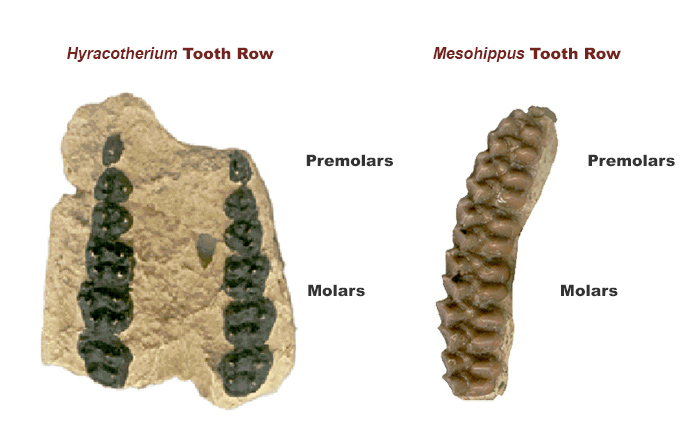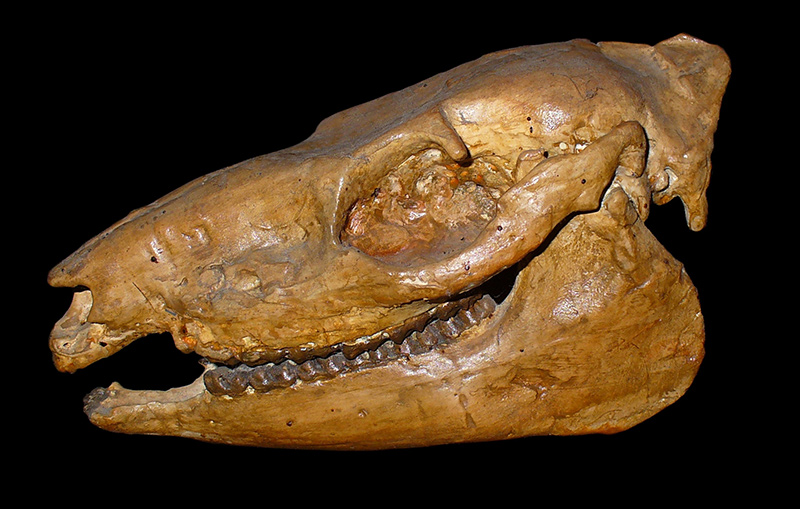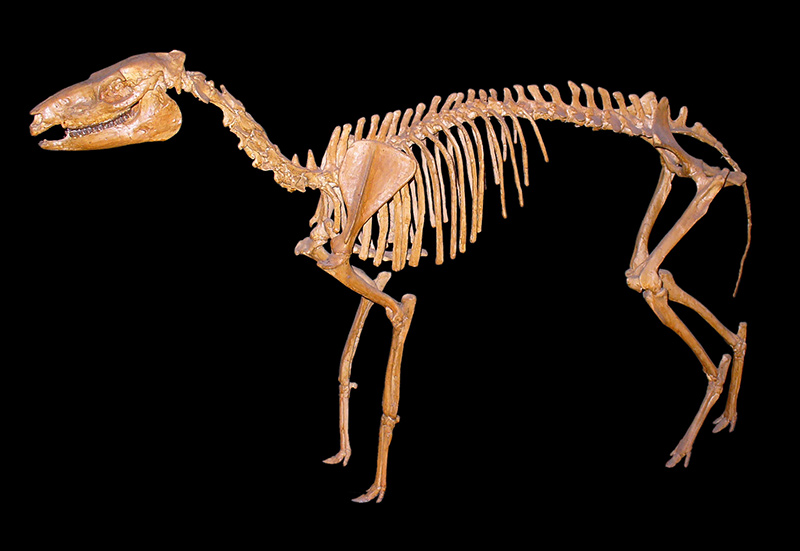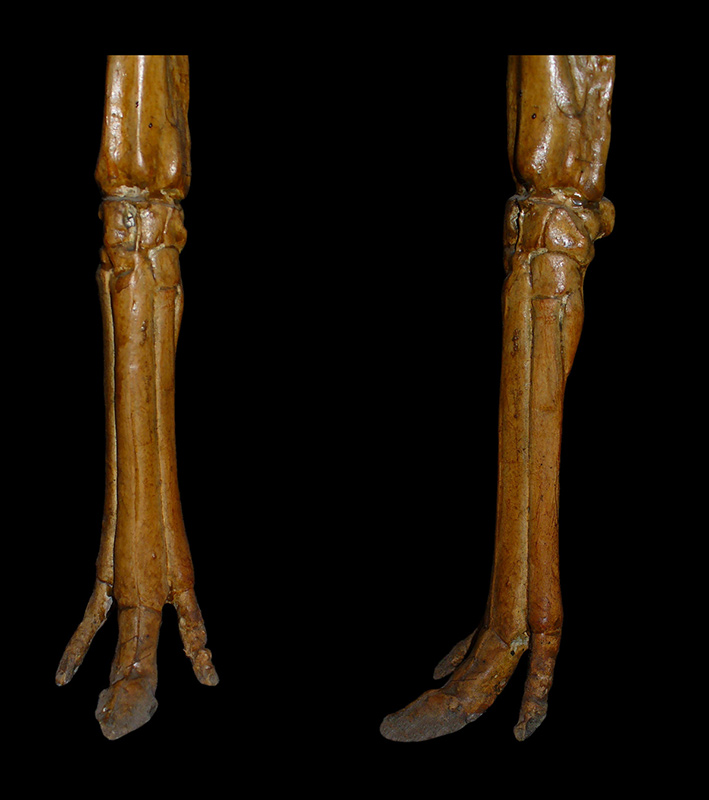The “middle horse” earned its name. Mesohippus is intermediate between the Eohippus-like horses of the Eocene, which don’t look much like our familiar “horse,” and more “modern” horses.
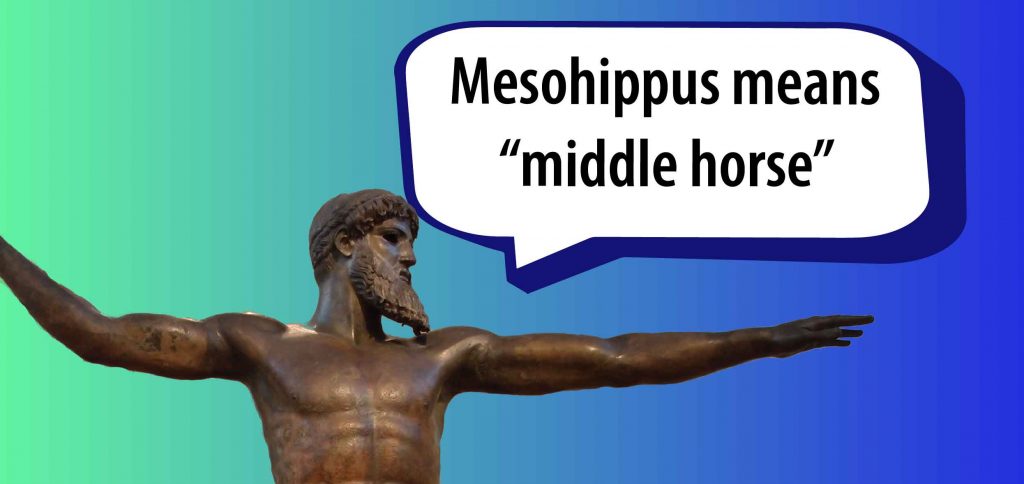 Where & When?
Where & When?
Fossils of Mesohippus are found at many Oligocene localities in Colorado and the Great Plains of the US, including Nebraska and the Dakotas, and Canada. This genus lived about 37-32 million years ago.
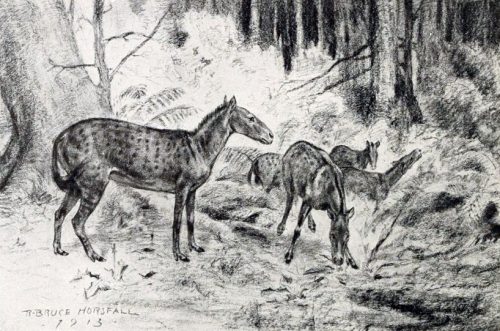
How was Mesohippus intermediate between the ancient Eocene horses and the later, more modern forms?
The Eocene predecessors of Mesohippus had four toes on their front feet, but Mesohippus lost the fourth toe.
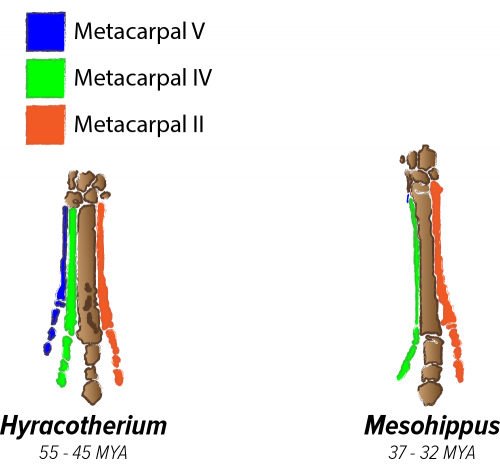
Also, Mesohippus‘ premolar teeth became more like molars. These premolars are said to be “molariform.” The primitive triangular premolar pulps food, while the squared molariform teeth crush and grind food. This might reflect a shift from a more diverse diet including fruit to a more limited diet of leaves and possibly grass
The first upper premolar is never molarized. It is only occasionally present in modern horses. It is popularly called the “wolf-tooth” by horse-breeders.
